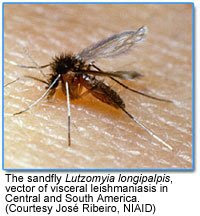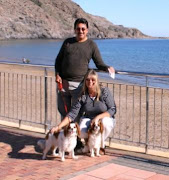 Pine Caterpillars (Latin name thaumetopoea pityocampa) are probably one of the most unpleasant creatures you will find in Spain, certainly in areas where pine trees grow in abundance. They are found throughout the warmer regions of Southern Europe, the Near East and North Africa. As well as causing much damage to pine forests, they are a major danger to animals and, to a lesser degree, human beings.
Pine Caterpillars (Latin name thaumetopoea pityocampa) are probably one of the most unpleasant creatures you will find in Spain, certainly in areas where pine trees grow in abundance. They are found throughout the warmer regions of Southern Europe, the Near East and North Africa. As well as causing much damage to pine forests, they are a major danger to animals and, to a lesser degree, human beings.
 Do not touch them. Warn your children that they are not like the
Do not touch them. Warn your children that they are not like the friendly English caterpillars. The very fine hairs on these creatures
are poisonous and most dangerous. They can be seen living in silk
cocoon style nests hanging in the pine trees to which they are most
harmful, stripping them of their pine needles.
When hungry, they leave their cocoon to seek another uninfested tree on which to feed. They travel nose to tail in a line, hence the name Processional. They are most noticeable from January to mid April and are at their most dangerous in mid/late February. The caterpillars are often seen in the evenings, walking in procession from tree to tree.
If they drop onto you or your pet, don't brush them off with your hands because the effect is most unpleasant, causing great irritation, rash and pain. Dogs, cats and people can suffer from shock. The hairs of the caterpillars are still virulent even when the creatures are dead. Do not hit them with sticks because hairs flying in the air are just as dangerous. Burn them, but be careful of floating hairs. If the caterpillars are in the tree cocoon state, first spray the nest with hair spray (to seal down the hairs), cover the cocoon and the affected part of the branch with a plastic bag, cut down the branch, place it on clear ground and burn it.
If the caterpillars are on the ground marching, it is better first to spray them with lighter fuel and then set them alight. This reduces the risk of flying hairs.Take care to only do this where you cannot inadvertently start a forest fire because during the summer months the undergrowth and trees are very dry.
If you live near pine trees, it is recommended that you keep Anti Histamine tablets handy as an early treatment. In particular, avoid ingesting the hairs. Dogs are most at risk by sniffing the ground where the caterpillars have marched.
Take particular care with your eyes. If affected the result is serious, causing pain and swelling similar to a bad case of conjunctivitis.
Treatment: If a person or animal shows signs of shock, get them to a doctor, hospital or vet immediately.
If you have children and are considering buying property, take the above details into consideration.
Golfing. When these caterpillars march across golf courses, play ceases immediately because it is too hazardous to try to clear them away.
Apparently here, February is the bad month for them so it looks like the pups will be going for walks well away from the campo (countryside) and will be staying on their leads to make sure they don't wander into a line of these accidentally. As soon as the threat of processional caterpillars is over we'll be starting towards the time for sand flies, another nasty for doggies.
From the same website:
Sand Flies (Leishmaniasis)
Your Pet Dog needs protection, otherwise it can be in serious danger
Dogs that regularly travel abroad may be exposed to Leishmaniasis (also known as Kala-Azar) which is carried from dog-to-dog by a bite from a Sand Fly.
 The name 'Sand Fly' is misleading as the Sand Fly's natural habitat is in wooded and garden areas.
The name 'Sand Fly' is misleading as the Sand Fly's natural habitat is in wooded and garden areas.
Dogs can be bitten up to 100 times an hour during the sand fly season which begins in May and ends in October. August is the worst month. The flies are mainly active between dusk and dawn. Early morning, 2 to 4am, is the worst period. They are not high flyers so your dog is better off in an upper room or flat at night. Fitting a preventative collar will protect your pet from approximately 95% of sand flies bites for the whole season. Dogs left out in the garden as security guards are particularly at risk.
It is thought that there may be very rare suspected cases of the disease being passed to humans; this is currently being research by the World Health Authority.
Prevention: The best preventative treatment up to now is , "INTERVET" invented a year ago and based on mosquito repellents It is impregnated into a very effective collar called "SCALIBOR" (Yes, both ours have them and we renew tem every 4 months all year round - just to be on the safe side)
Please note, this collar lasts for one season only and needs replacing each May. Do not let children play with the collar, we have also found the smell somewhat unpleasant.
See your Vet about a collar before you travel to Spain. Mosquito repellents, sprays and some mosquito nets etc help to keep them out of the house. These flies are very tiny.
Things that the owner can do to prevent are:
Keep the dog inside the house when the sun starts to set, and keep toilet breaks short before bedtime.
Don't give night walks where water runs
Use of mosquito nets to keep flies out of the house.
There have been very few cases of Leishmaniasis "Kala-Azar" in Spain. When they occur they can be fatal if not treated.
And while we're on nasty beasties we also need to be aware of heartworm's in dogs. Again, this is found in warmer climates where mosquito's are found and again I owe my knowledge of it's existence from postings on the Eye on Spain forum. The disease is transmitted to dogs by mosquito's.
Heartworm is a severe, often fatal, disease spread from host-to-host by mosquito bites. It can affect dogs, cats and foxes. In Western Europe, heartworm is particularly prevalent in southern France, Spain, Italy and the Mediterranean.
Symptoms take many months to several years to develop and include a cough, lethargy, weight loss and loss of condition.
Heartworm is caused by a parasitic roundworm called Dirofilaria immitis which is spread from dog to dog by mosquito bites. The parasite travels through the bloodstream and in the final stages of its lifecycle, resides in the heart of its host. The parasite can kill its host through congestive heart failure.
Unfortunately, treatment is often costly and complex, so preventative measures are advisable if you’re travelling abroad with your pet. For further information, contact your vet.
A variety of preventative treatments are available to help avoid mosquito bites and eradicate heartworm. For further advice and information, contact your vet.
Well, I think that's enough scarey details for one post - but at least we can protect our beloved pups by knowing about these dangerous insects, thanks to the internet which allows such information to be shared.
 I managed to get about 70 yards before the ravine and took an 8 iron. I hit a beautiful shot that dropped just short of the green, hit the rocky wall at the back of the ravine, bounced backwards and hit off the rocks on the front edge of the ravine and ricocheted up into the air and dropped at the back of the green - on for 4! Down in 2 putts, thank you very much - 3 points! ( I get 2 shots on the 14th)
I managed to get about 70 yards before the ravine and took an 8 iron. I hit a beautiful shot that dropped just short of the green, hit the rocky wall at the back of the ravine, bounced backwards and hit off the rocks on the front edge of the ravine and ricocheted up into the air and dropped at the back of the green - on for 4! Down in 2 putts, thank you very much - 3 points! ( I get 2 shots on the 14th)















